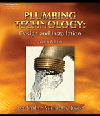Tools tackle the labor shortage
Manufacturers say providing customers with products that help them get more done on the jobsite is top of mind.

Ryan Gomiela, co-owner of GPS Plumbing and CHANNELLOCK brand ambassador, says the skilled labor shortage means contractors are having to do more with less. “There always will be a need for high-quality and reliable hand tools,” he says. Photo courtesy of CHANNELLOCK.

DEWALT Product Manager Daniel Heiney-Gonzalez sees jobsites continuing to go the cordless tool route. “This will help with the installation of some of the new piping technologies entering the marketplace,” he says. Photo courtesy of DEWALT.

Milwaukee Tool’s Corey Deckert says productivity needs to be the focus and uses the PEX-press genre as a prime example. “While tools are just a small portion of the overall cost on the job, the right tools can maximize output and the quality of labor and materials,” he says. Photo courtesy of Milwaukee Tool.



What’s the latest and greatest when it comes to PHCP tools distributors are selling at their locations?
Sadly, it’s not tools that are top of mind these days. It’s the folks who use them.
“I have seen an increase in the skills gap the last few years,” says Ryan Gomiela, a master plumber, co-owner of GPS Plumbing out of Melbourne, Florida, and CHANNELLOCK brand ambassador.
“In other words, there are jobs out there, but not enough tradesmen and women to fill them. The gap in the workforce means we often are having to do more with less and are pressed for time. To that end, there always will be a need for high-quality and reliable hand tools. I don’t have time to deal with broken tools on the jobsite. I need tools and materials I can count on.”
DEWALT Product Manager Daniel Heiney-Gonzalez is noticing the same thing. “The biggest shift in the marketplace has been the labor shortage,” he says. “With the challenges of finding qualified workers, it has contributed to a backlog that companies are seeing today.”
But Heiney-Gonzalez notes that challenge is opening opportunities for tool manufacturers. “This has provided an opportunity for innovation to come in and make those workers who are working more efficient,” he says. “For example, the press technology simplifies connecting the pipe vs. the traditional method of soldering. Along with that, as power tools are developed, safety features are added to the tools to help protect the users.”
Sean Holloway, director of sales-Western U.S. for RectorSeal, says any tool that saves time is in demand when considering the current qualified labor shortage. “If a new tool saves just one minute for a process vs. older technology tools, that can calculate to about a half-hour of time savings if there are 30 processes to do in one day.”
The cordless jobsite
Heiney-Gonzalez sees jobsites continuing to go the cordless route when it comes to power tools. “As battery technology continues to evolve, it will allow more high-powered tools to transition from corded to cordless. This will help with installation of some of the new piping technologies entering the marketplace,” he explains.
Milwaukee Tool Senior Vice President of Product Management Corey Dickert says with changes in workflow brought on by innovations in technology, the jobsite has become more data-driven.
“With this, contractors are now looking to manufacturers to give them an edge,” he says. “As jobs continue to be more integrated with software and digitization of data, tools that collaborate to deliver equipment and asset management and reporting are going to deliver the productivity necessary to win the bid and get the job done on time and within cost.”
Dickert adds challenges on the jobsite such as battery runtime, portability and overall performance are being addressed as cordless technology improves. “This investment in technology also has unlocked capabilities the industry never thought possible,” he says. “It’s the capability to not only deliver traditional productivity realized when using cordless tools, but also provide additional value to the contractor that never was possible due to technology limitations. The investment contractors make in power tools can be substantial and the value those tools provide continues to evolve with improvements in technology.”
Ryan Ramage, trade manager-mechanical at Hilti North America, sees the world of cordless continuing to enter new power categories. “Doing more and more applications historically performed by corded tools,” he adds. “Different battery classes are emerging to solve different pain points. For instance, smaller 12-volt tools are being used for confined spaces and larger batteries for applications that require more power. Theft, tracking and lost tools remain a major pain point, so searching for the right asset management solutions is important.”
Full-court press
One category that continues to expand on the tool front is pressing technology. “Tools used by the plumbing and mechanical trades are going through an evolution,” Heiney-Gonzalez says. “This is being driven by the adoption of new materials and the innovation of battery technologies. The adoption of materials such as PEX and press fittings has provided the user with new systems for added efficiency. Even though this could come at an additional cost with investing in a PEX-dedicated tool or hydraulic tool, users understand the time and labor savings pays off the investment in two or three jobs. Along with that, new battery technologies have provided the ability to take the power of corded tools and make them cordless. This allows the user to minimize the need for extension cords as the battery technologies allow for traditionally corded tools such as large hammers, saws or even pipe threaders to be cordless.”
Deckert says productivity needs to be the focus and uses the PEX-press genre as a prime example. “While tools are just a small portion of the overall cost on the job, the right tools can maximize output and the quality of labor and materials,” he says. “For example, complete engineered systems such as Upnoor’s ProPEX expansion system are rapidly growing and becoming more prominent. Originally only used in water systems, these systems now are used in mechanical, contracting and pipe-fitting applications. This shift places tools as more of an investment, thus tool manufacturers need to adjust to support and accelerate this transition. Additionally, the continued shift to PEX and press technology all together eliminates brazing, soldering and welding. These advancements are not only cutting down on the overall costs associated with those historic pressures, but also helping make the jobsite safer.”
More trends
Tool manufacturers shared insights into some other emerging trends in the field. Hilti’s Ramage notes pre-fabrication is moving jobsite applications back to the customer’s shops, “which creates a new tool and consumable environment,” he notes.
Gomiela is noticing social media having a major impact on the service side of the trade industry. “I have seen a shift in ‘tools’ we use to generate leads, reviews and marketing in general,” he says. “I would expect this trend to continue.”
RIDGID Underground Technologies Product Manager Brendon Goede says the tool industry is making a shift similar to what has been seen in the automotive industry in recent years. “We see longer service intervals in vehicles,” he says. “Twenty years ago it was 3,000 miles before an oil change and now 10,000-plus is more common on new cars. Similar to other industries, we are beginning to see more requests for tools that not only last longer, but require less repairs throughout the life of the tool. Incorporating newer manufacturing techniques into our tools has enabled us to achieve these longer service intervals.”
Gomiela, says that while new technology will continue to invade this space, one constant always will remain.
“While Bluetooth connectivity, LED lights and Wi-Fi-enabled hammer drills are interesting, the need for well-made, reliable, safe hand tools that tradesmen have turned to day in and day out for the last 130 years will never go by the wayside,” he says.
Looking for a reprint of this article?
From high-res PDFs to custom plaques, order your copy today!












